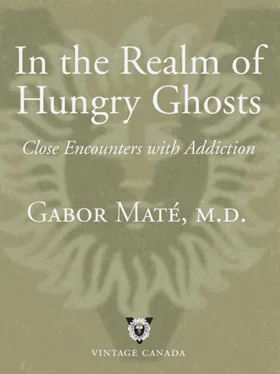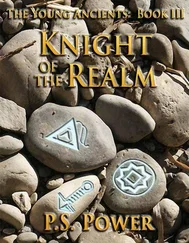Although hardcore drug addiction is much more than a disease, the harm reduction model is essential to its treatment. Given our lack of a systematic, evidence-based approach to addiction, in many cases it’s futile to dream of a cure. So long as society ostracizes the addict and the legal system does everything it can to heighten the drug problem, the welfare and medical systems can aim only to mitigate some of its effects. Sad to say, in our context harm reduction means reducing not only the harm caused by the disease of addiction, but also the harm caused by the social assault on drug addicts.
We will look shortly at some harm reduction measures. First, however, we’ll dispense with two prevalent arguments against harm reduction: that it squanders resources on undeserving people who are the authors of their own misfortune and that it justifies and enables addiction.

If our guiding principle is that a person who makes his own bed ought to lie in it, we should immediately dismantle much of our health care system. Many diseases and conditions arise from self-chosen habits or circumstances and could be prevented by more astute decisions. According to a recent study by British Columbia’s health officer, the provincial government spends $1.8 billion dollars on diseases caused by unhealthy lifestyles. *27The average per capita health care cost for those with no risk factors is “$1,003 compared with $2,086 per capita for those with three risk factors, including smoking, being overweight/obese and physically inactive.” 1All of these factors, we might say, represent “choices,” and even after a heart attack, for instance, some patients will continue to bring these risks upon themselves. The same is true of people with chronic bronchitis who persist in smoking, skiers who brave moguls and steep slopes despite having sustained fractures and people who remain in a stressful marriage despite requiring treatment for depression or anxiety. No cardiologist, respiratory specialist, orthopaedic surgeon or psychiatrist would refuse treatment on the ground that the problem was “self-inflicted.”
When it comes to drug addicts, some people believe we ought to apply different criteria. One afternoon in August 2006 I called a CBC radio program to discuss Insite, Vancouver’s controversial supervised injection facility for drug users. Just before the moderator turned to me, he interviewed an RCMP officer. Dozens of addicts who have overdosed at Insite have been successfully resuscitated, the host pointed out. Lives have been saved that might otherwise have been lost. That’s not necessarily a good thing, the Mountie spokesman explained. “It’s well known that negative consequences are the only major deterrent to drug use. If you are saving people’s lives, you are sending the message that it’s safe to use drugs.” This officer, on behalf of Canada’s national law enforcement agency, seemed willing to let people die in the hope of teaching a lesson. He seemed unaware, or not to care, that in the 1990s Vancouver’s injection users had received an average of 147 such “lessons” every year in the form of overdose deaths, without any discernible deterrent effect. 2
It would be encouraging to believe that such a dark perspective is confined to the minds of some police officers. Not quite so. At about this same time the Globe and Mail published an article on Insite that approvingly quoted Anthony Daniels, a retired British psychiatrist. “I suppose the argument for the safe injection site is it would reduce the number of deaths,” he told Globe columnist Gary Mason. “But I don’t see why we should reduce the number of deaths. It is not our responsibility to do so. It is the responsibility of the addicts themselves. If they want to inject themselves with heroin, it’s a very bad choice. If people die from it, I don’t feel any particular guilt because I don’t feel any responsibility for it.” 3
It would have been instructive to know whether or not the psychiatrist and his faithful scribe at the Globe were willing to extend this principle to other groups, such as, say, smokers with lung cancer or emphysema, type A business executives who work themselves into a heart attack, battered women who remain loyal to an abusive partner or people injured in automobile accidents in full knowledge of the risks of driving. According to this same logic no smoker should be defibrillated and brought back to life after a heart attack and no one who drinks alcohol should receive a blood trans-fusion in the wake of intestinal bleeding. Anyone worried about the possibility of a myocardial infarction or a stroke ought to wear a large badge identifying him as a nonsmoker, nondrinker, regular exerciser and nonconsumer of trans fatty acids. Absent such a marker, no bystander should even dial 911 on their behalf.
Although we are all responsible for our lives, no human or medical principle dictates that we refuse to help others whose own decisions have brought trouble upon their heads—unless we believe that in trying to help them, we are perpetrating greater harm. That would perhaps be the case if harm reduction could be shown to enable substance abuse. But as we have seen, hardcore drug users do not wait to be “enabled,” and there are few harsh consequences they haven’t yet experienced. There is no evidence from anywhere in the world that harm reduction measures encourage drug use. Denying addicts humane assistance multiplies their miseries without bringing them one inch closer to recovery.

There is also no contradiction between harm reduction and abstinence. The two objectives are incompatible only if we imagine that we can set the agenda for someone else’s life regardless of what he or she may choose. We cannot. Short of extreme coercion there is absolutely nothing anyone can do to induce another to give up addiction, except—as discussed in the previous chapter—to provide the island of relief where contemplation and self-respect can, perhaps, take root. Those ready to choose abstinence should receive every possible support—much more support than we currently provide. But what of those who don’t choose that path?
The impossibility of changing other people is not restricted to addictions. Try as we may to motivate another person to be different or to do this or not to do that, our attempts founder on a basic human trait: the drive for autonomy. “And one may choose what is contrary to one’s own interests and sometimes one positively ought,” wrote Fyodor Dostoevsky in Notes from the Underground. “What man wants is simply independent choice, whatever that independence may cost and wherever it may lead.” The issue is not whether the addict would be better off without his habit—of course he would—but whether we are going to abandon him if he is unable to give it up. Are we willing to care for human beings who suffer because of their own persistent behaviours, mindful that these behaviours stem from early life misfortunes they had no hand in creating?
The harm reduction approach accepts that some people—many people—are too deeply enmeshed in substance dependence for any realistic “cure” under present circumstances. There is, for now, too much pain in their lives and too few internal and external resources available to them. In practising harm reduction we do not give up on abstinence—on the contrary, we may hope to encourage that possibility by helping people feel better, bringing them into therapeutic relationships with caregivers, offering them a sense of trust, removing judgment from our interactions with them and giving them a sense of acceptance. At the same time, we do not hold out abstinence as the Holy Grail and we do not make our valuation of addicts as worthwhile human beings dependent on their making choices that please us.
Читать дальше













